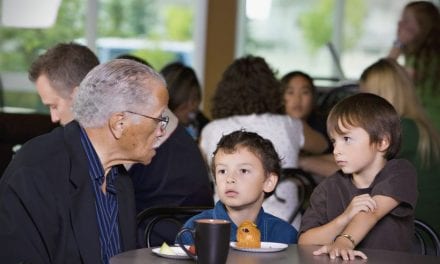By Jack Cumming
Imagine a life enrichment organization with over 400,000 members. There is one, but it’s not in the United States. It could be, and it could provide a paradigm to elevate life enrichment in senior living. The secret of its success is its empowerment model, in which the participants – residents in the case of senior living – serve both as leaders and learners.
That contrasts with the staff-led model in most senior living communities in which holiday and social galas – music, beverages, and hors d’oeuvres – are central, followed by contracted presentations, local outings, and outsider-led crafts programs, e.g, “Make Your Own Greeting Cards.”
Facilitation
With the empowerment model that is so successful overseas, the small staff limits itself to facilitation. The participants create the experience and the engagement. In senior living, the equivalent would be a part-time person to support resident-initiated and resident-led activities. These administrative tasks include scheduling, set-up, tracking, etc.
Is this grassroots model something that might elevate the resident experience in senior living? Perhaps not for the most afflicted older people, but it can be a powerful force among others. An exception to today’s prevalent staff-initiated “enrichment” model is that at Kendal Corporation in which residents have long led activities offerings consistent with the Quaker principles that guide Kendal. Click here for a deep dive into Kendal’s approach.
A Business Opportunity
It’s not difficult to imagine an industry-serving life enrichment business with which individual communities could contract to improve their resident-facing programs. It might well operate along the line of the UK’s U3A trust, which is the life enrichment organization that has 400,000 members. Hiring a life enrichment director can be a difficult assignment, especially during a time of labor scarcity. Contracting the function out offers what might prove to be a more successful approach.
Moreover, life enrichment directors are sometimes less respected than, say, healthcare directors. The pay can be low. The opportunities for advancement can be limited. Those challenges can be overcome, and life enrichment activities can be improved and made more relevant, by contracting the function out to specialists. We can imagine a time when residents might be allocated activities points, much as many communities now allocate dining points, so residents could continuously use their points to support the activities that best serve them, thereby, indicating preferences in the normal course of what they choose.
Resident Needs Vary
Our senior living communities today include several groups of residents each of whom may have different life enrichment needs. There are residents who are still working. They may just want a welcoming place where they can relax at the end of the day. Easing into a casual dinner in a sports bar atmosphere might be just right.
There are others who are retired from full-time employment but who still like to lend their talents to making the community better. They give of themselves selflessly in support of others and they fill the resident committees when they can. Astonishingly, some communities limit the number of committee members, and rejecting a person who volunteers for a committee is as far removed from the promise and mission of senior living as any action can be.
Still, other residents are like my friend who wrote recently in an email, “I like the current way activities are done here. It makes it very easy for residents. They don’t have to think. They just choose what they want to do.” These are the people who may have had unhappy work lives and now they just want peace and serenity. Many of the planners who move into CCRCs are looking for constancy and complacency, unlike their more active neighbors who prefer to stay put in the larger community.
There are those who still want to be active but are handicapped by sight or hearing. Those large mega parties that are popular with life enrichment directors whenever a holiday presents an excuse for a party with beverages, edibles, costumes, and loud music don’t work for this group. They need more intimate settings where they can have the support of friends old and new.
Then there are those residents who have reached a stage of dependency with reduced cognitive and physical function. Something as simple as group sharing of the day’s news may suffice to bring meaning into their lives. For them visits from family, friends, and caring volunteers can lighten their lives.
In short, the life enrichment needs of residents vary widely from the hail-fellow-well-met dynamics of extroverted gatherings to the quiet, reserved folk who treasure close friends. Those quieter residents may feel out of place in boisterous gala events. Getting the balance right calls for expertise and talent.
Empowerment ↔ Enrichment
The wise course is to let these disparate interest needs find their own niche. The British U3A is thriving because it is flexible in allowing changing interests and needs to find a home naturally. That model of bottom-up empowerment in place of top-down control can be the path to success for senior living. Click here for a short introduction to the British U3A, and click here for an extensive discussion of how they grew from an idea to an organization with 400,000 members.








